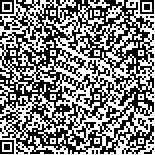| This article has been:Browse 962Times Download 845Times |

scan it! |
|
|
| DOI:10.13522/j.cnki.ggps.2020352 |
|
| Kinetic Energy Distribution of Water Droplets in Fixed Solar Sprinkler Irrigation System |
|
LIU Junping, JIANG Nan*, XU Ji’en, LI Jipeng, ZHANG Qing
|
|
Research Center of Fluid Machinery Engineering and Technology, Jiangsu University, Zhenjiang 212013, China
|
| Abstract: |
| 【Background】Solar sprinkler irrigation system is energy-efficient and can reduce operation costs, but it is susceptible to weather and timing of irrigation as insufficient energy supply may occur when demand for power peaks during the irrigation. This could result in low energy conversion efficiency and destabilize hydraulic performance of the system. Light radiation, as an important parameter in designing solar irrigation systems, varies spatiotemporally and could affect the amount of solar energy absorbed by the solar panel and result in unstable electricity supply and changes in water pressure in the system. Currently, there is a lack of protocol for optimizing configuration of the operating parameters of the solar sprinkler irrigation systems.【Objective】Considering that existing solar sprinkler irrigation systems are prone to unstable water pressure, uneven energy distribution and low conversion efficiency, this paper aims to elucidate how light intensity affects the spray performance of the sprinkler irrigation system.【Method】The hydraulic performance parameters of a solar sprinkler irrigation system under light intensities between 225.7 and 1 145 W/m2 were measured using laser raindrop spectrometer technology, from which we calculated the kinetic energy distribution of the water droplets, kinetic energy per unit volume of water, and the kinetic energy intensity. We also proposed a method to calculate the energy conversion efficiency of the system. 【Result】The light intensity mainly affected the kinetic energy of small water droplets with diameter less than 1 mm in the proximity of the sprinkler. As the light intensity increased, the kinetic energy per unit volume increased first and then declined asymptotically in a trend which can be fit by a fourth-degree polynomial function. With the increase in the radial distance from the sprinkler, the kinetic energy intensity increased first and then gradually reduced to 0 at the far end. With the light intensity varying between 300.8 and 1 018.8 W/m2, the kinetic energy intensity only showed a small fluctuation and the energy conversion efficiency of the system varied between 24.59% to 37.21%. When the light intensity was in 225.7~416 W/m2, the conversion efficiency of the energy intensity peaked approximately at 36%.【Conclusion】 When the light intensity was within 300.8~416 W/m2, the kinetic energy showed the smallest fluctuation, the energy distribution was most uniform, and the energy conversion efficiency maximized. Our results provide a baseline guidance for improving spray performance and energy conversion rate of solar sprinkler irrigation system, and helping optimize configuration of its operating parameters. |
| Key words: solar sprinkler irrigation system; light intensity; water droplets distribution; kinetic energy intensity; energy conversion |
|
|